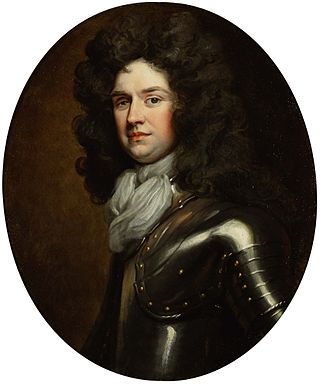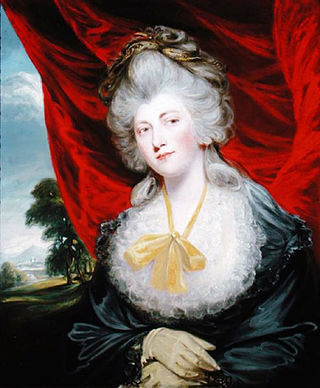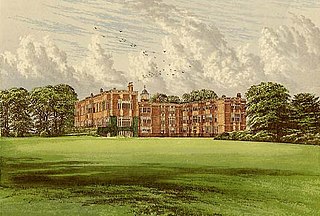
Temple Newsam is a Tudor-Jacobean house in Leeds, West Yorkshire, England, with grounds landscaped by Capability Brown.

Earl of Halifax is a title that has been created four times in British history—once in the Peerage of England, twice in the Peerage of Great Britain, and once in the Peerage of the United Kingdom. The name of the peerage refers to Halifax, West Yorkshire.
Charles Edward Peter Neil Wood, 3rd Earl of Halifax,, is a British peer and Conservative politician.
This is a list of people who have served as Lord Lieutenant for the East Riding of Yorkshire. The office was established after the English Restoration in 1660, when a Lord Lieutenant was appointed for each Riding of Yorkshire. Since 1721, all Lord Lieutenants have also been Custos Rotulorum of the East Riding of Yorkshire, and for part of the period also Lieutenants of the Town and County of the Town of Kingston upon Hull. It was abolished on 31 March 1974 with the creation of the county of Humberside, but was re-created upon the abolition of Humberside on 1 April 1996.
The post of Lord Lieutenant of the North Riding of Yorkshire was created in 1660, at the Restoration, and was abolished on 31 March 1974. From 1782 until 1974, all Lords Lieutenant were also Custos Rotulorum of the North Riding of Yorkshire.

General David Colyear, 1st Earl of Portmore, was a Scottish general and Governor of Gibraltar.
Colonel Henry Hervey Aston was an English cricketer who played for the Hambledon Club. He was at different times a member of both the Hambledon Club and Marylebone Cricket Club (MCC). A useful batsman, Aston made 13 known first-class appearances from 1786 to 1793 when his military duties took precedence.

Isabella Anne Seymour-Conway, Marchioness of Hertford was an English landowner, courtier and a mistress of King George IV when he was Prince of Wales. She was born in 1759 at Temple Newsam, Leeds, and was the eldest daughter of Charles Ingram, 9th Viscount of Irvine, and his wife Frances Gibson Shepheard Ingram. She married Francis Ingram-Seymour-Conway, 2nd Marquess of Hertford, in 1776, at age sixteen, being his second wife.

Viscount of Irvine was a title in the Peerage of Scotland. It was created on 23 May 1661 for Henry Ingram, of Temple Newsam, Yorkshire, and Hoar Cross Hall, Staffordshire. He was made Lord Ingram at the same time, also in the Peerage of Scotland.

Anne, Viscountess Irvine, was a British court official. She was a poet and close friend of Horace Walpole.

Sir Arthur Ingram was an English investor, landowner and politician who sat in the House of Commons at various times between 1610 and 1642. The subject of an influential biography, he has been celebrated for his "financial skill and ruthless self-interest", and characterized as "a rapacious, plausible swindler who ruined many during a long and successful criminal career". Probably of London birth but of Yorkshire background, he was a very extensive landowner in Yorkshire. He acquired and rebuilt the former Lennox residence at Temple Newsam near Leeds, which became the principal seat of his family, including the Lords Ingram, Viscount Irvine and their descendants, for over 300 years.
Arthur Ingram, 3rd Viscount of Irvine was an English Member of Parliament and peer. He was the Vice-Admiral of Yorkshire and Member of Parliament for Yorkshire and Scarborough. He was the father or grandfather of all the later Viscounts Irvine.

Charles Ingram, 9th Viscount of Irvine, known as Charles Ingram until 1763, was a British landowner, politician and courtier. He succeeded his uncle to the Viscountcy and the Temple Newsam estate in Leeds in 1763.
Colonel Rich Ingram, 5th Viscount of Irvine, was an English peer and politician.
Arthur Ingram, 6th Viscount of Irvine, styled the Honourable Arthur Ingram until 1721, was a British landowner and politician who sat in the House of Commons from 1715 until 1721 when he succeeded to the peerage as Viscount Irvine.

Henry Ingram, 7th Viscount of Irvine, styled The Honourable Henry Ingram until 1736, was an English landowner and politician.
Colonel the Honourable Charles Ingram, was a British soldier and politician.
John Machell (1637–1704) was for twenty years Member of Parliament for Horsham, Sussex, during the reigns of Charles II, James II and William III and Mary II. By the marriage of his daughter Isabella Machell (1670–1764) to Arthur Ingram, 3rd Viscount of Irvine, he became the grandfather of the fourth, fifth, sixth, seventh and eighth Viscounts of Irvine, and great-grandfather of the ninth, seated at Temple Newsam near Leeds, whose family inherited and augmented his valuable property of Hills house at Horsham, and continued the parliamentary tradition there.
Henry Ingram (1640–1666) was the first to hold the title Lord Ingram, and Viscount Irvine, in the Peerage of Scotland, which in English sources is usually written Viscount Irwin. The Viscountcy existed in four generations of his family before becoming extinct: the seat was at Temple Newsam near Leeds, in Yorkshire.
Frances Gibson Shepheard Ingram (1734-1807) was a wealthy heiress and landowner who was instrumental in the design of the landscape at Temple Newsam, Leeds. Frances was the illegitimate daughter of the rich Tory merchant, Samuel Shepheard; her mother was called Gibson. Samuel left Frances £40,000 in his will stating that she must not marry a peer, an Irishman or a Scotsman. She married Charles Ingram, 9th Viscount Irwin in 1758 after several years of legal dispute. At Charles's seat in Yorkshire, Temple Newsam, Frances insisted that Capability Brown redesign the parkland. Frances was an active gardener, supervising the planting in the grounds. For instance, surviving correspondence shows she helped her husband mark out where shrubs were to be planted along her gravel walk.








